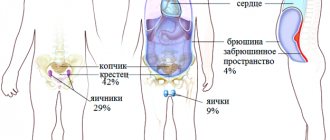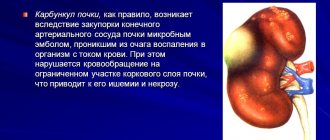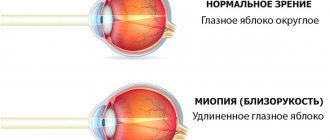Learn more about diseases starting with the letter “L”: Lacunar cerebral infarction, Mild cognitive impairment, Leukodystrophy, Schilder’s leukoencephalitis, Drug-induced parkinsonism, Lethargic encephalitis, Frontal syndrome, Lumbago, Lumboischialgia.
Description and causes of pathology
The disease is genetic in nature and is caused by a violation of metabolic processes in the body, resulting in a systematic accumulation of pathogenic elements in the brain structures. Pathogens negatively affect neurons, which triggers degenerative mechanisms and leads to the destruction of myelin in the medulla. Myelin is a component of the protective sheath of the nerve trunk.
In clinical practice, there are a large number of types of this pathology (about 60), which differ in the characteristics of the gene lesion and the age category of primary manifestations. The most common are three types of anomalies: metachromatic, sudanophilic and globoid cell. Their prevalence ranges from 0.5 to 1 case per hundred thousand registered cases. Other types of leukodystrophy are extremely rare.
The division according to the age criterion of manifestation of the disease is divided into the following varieties:
- infantile:
- late infantile;
- teenage;
- age option.
The basis for the development of leukodystrophy is the hereditary transmission of a certain type of deformed enzyme. Some forms of the anomaly are inherited exclusively by gender. Cases of spontaneous mutations have also been recorded. An improperly functioning enzyme leads to metabolic disorders, the most common defect being a disorder of lipid metabolism.
The pathogenic agent cannot be removed from the tissues, and begins to gradually accumulate in nerve fibers (brain and spinal cord), as well as in other organs, mainly the liver and kidneys. The accumulating agent leads to the destruction of the myelin covers of nerve trunks, the cessation of functional connections between cells, the death of neurons and their replacement with dense connective tissue (glia). The disease spreads symmetrically in both hemispheres of the brain, looks like a diffuse, focal destruction of the cellular network with the accumulation of decay products in the tissues and the active proliferation of connective glia.
Prevention
- Studying the genetic panel of parents makes it possible to identify gene mutations.
- Identification of female carriers of adrenoleukodystrophy is carried out by biochemical determination of the level of long-chain fatty acids VLCFA in the blood. Future parents at risk for the metachromatic form of the disease should have their arylsulfatase A .
- In families where there have been cases of the birth of children with this pathology, prenatal diagnosis is carried out in all subsequent pregnancies. This type of diagnosis was developed for metachromatic leukodystrophy , adrenoleukodystrophy and globoid cell dystrophy . In metachromatic leukodystrophy, arylsulfatase A in the cells of the amniotic fluid or chorionic villi. Prenatal diagnosis of adrenoleukodystrophy is carried out by DNA analysis.
Signs of the disease
Most often, the phenomenon of leukodystrophy manifests itself in early childhood. During the newborn period, the baby looks healthy and develops at the normal pace. Over time, atypical neurological signs begin to be noted, progressing without periods of stagnation (steadily). The speed of progress of the abnormal condition is the more intense, the earlier the first symptoms of the genetic disorder appear. The primary signs are:
- tonic disorders in the muscular system - weakness or excessive muscle tension, twitching of certain muscle groups;
- behavioral changes;
- epileptic syndrome with systematic seizures;
- dysfunction of sound perception, progressive deafness;
- drop in level of vision;
- degradation of intelligence with complete loss of previously acquired skills.
The late stage is characterized by:
- periodic attacks of paralysis;
- diagnosing oligophrenia;
- loss of ability to swallow independently;
- complete hearing loss.
Types of leukodystrophy
Depending on the form of the disease, specific symptoms may appear that help differentiate a certain type of leukodystrophy. Let's look at the most common varieties:
1. Metachromatic. The early form manifests itself in the first three months of a child’s life, manifested by developmental delays and frequent convulsions. It ends in death before the first year of life. At the onset of symptoms at the age of 1 to 3 years, tonal disorders of the muscular system, weakness, and mental retardation are observed. Life expectancy can reach ten years. In the juvenile form, the disease begins at 4-6 years of age and lasts about seven years. If a patient develops leukodystrophy as an adult, the average life expectancy is 15-20 years.
2. Sudanophilic. Inherited predominantly through the female line, it manifests itself in early childhood (1-4 years). A clear sign of the disorder is involuntary motor activity of the eyeballs, oscillations from side to side along different trajectories (nystagmus). Next comes a delay in mental development, and the sensitivity of the skin increases. A noticeable progression of the sudanophilic form occurs until the child is ten years old, then it slows down and enters the remission stage. The patient has the opportunity to live to maturity and old age. If the pathology is accompanied by adrenal insufficiency, the life cycle lasts no more than eight years.
3. Globoid cell. It is named so because large, round globoid cells are formed in place of dead neurons. It starts in the first half of the baby’s life with such signs as increased excitability, psychomotor retardation, muscle hypertonia, epileptic seizures, mental retardation. At a later age, it is rare and begins with a deterioration in visual function.
4. Spongy degeneration. There are: epileptic syndrome, excessive accumulation of fluid in the cranial cavity (hydrocephalus) with an increase in the diameter of the head and divergence of the skull along the boundaries of the sutures. The disease lasts no more than 3 years and ends in death.
5. Alexander's disease. The basis of the pathological process is a defect in the gene responsible for the synthesis of a certain type of protein that accumulates in glia. Manifestations during the neonatal period are severe and lead to death in the first year of life. With the onset of symptoms at 1-2 years of age, developmental delays, neurological disorders and hydrocephalus are detected. From 4 to 10 years, mainly the stem part of neurons suffers, but life expectancy can be 15-30 years. When affected in adulthood, it progresses at a slower pace.
Other variants of leukodystrophy are recorded extremely rarely. The medical literature describes some forms that number no more than a couple of hundred cases throughout neurological practice.
Treatment
To date, no treatment has been developed for leukodystrophies that would inhibit progression. However, symptomatic treatment reduces clinical manifestations to some extent. This includes anticonvulsant and dehydration therapy , massage and exercise therapy to improve muscle condition and movement function. Occupational therapy is also important - preserving and maintaining everyday skills and self-care. Attempts are being made for conservative treatment of adrenoleukodystrophy using glycerotrioleate oil, which reduces the level of long-chain fatty acids by 30-40%.
“Lorenzo’s oil” is also prescribed - a mixture of oleic and erucic acids (4:1 ratio). Taking this oil orally for a month normalizes the level of fatty acids in the blood. It is indicated for prophylactic use at the preclinical stage before the development of neurological symptoms in asymptomatic patients. It also makes sense to take it to slow progression. Indeed, a positive effect is obtained when used at the preclinical stage, but it is ineffective in patients with severe disorders. The use of lipid-lowering drugs ( Lovastatin , Simvastatin ) was also ineffective, since the decrease in the level of long-chain fatty acids was insignificant.
Patients with adrenoleukodystrophy are prescribed a low-fat diet. Patients with adrenal insufficiency are prescribed steroid replacement therapy under the control of hormones. Attempts are being made to search for drugs that could activate abnormal genes, but they have so far been unsuccessful. Gene therapy methods are based on cloning and introducing a healthy gene that replaces the pathological gene. The treatment is experimental in nature - non-pathogenic viruses that carry an artificially synthesized gene are introduced into the brain along with the solution.
Procedures and operations
The treatment method for this neurological pathology is donor bone marrow transplantation. If it is successfully carried out, normalization of the level of missing enzymes and metabolism is achieved, and accordingly the quality and life expectancy of patients improves. The main condition is to carry out the transplantation before the development of neurological disorders. Transplantation does not correct already developed lesions of the central nervous system - it only slows down or stops their progression.
In rapidly progressing forms, transplantation fails to improve the condition and avoid severe disability of the patient. This is explained by the fact that after transplantation, for 1-2 years, donor cells still “do not work” at full strength and can completely normalize myelin function. When the disease progresses slowly, transplantation is more successful. After transplantation, complications are possible - graft rejection, infectious diseases and graft-versus-host disease. If transplantation is not possible, treatment is aimed at relieving symptoms.
If food is not possible, feeding through a gastrostomy tube or nasogastric tube is arranged. In case of severe respiratory failure, the patient is provided with respiratory support - tracheostomy and artificial ventilation.
Diagnostic methods
Diagnosing a gene abnormality requires the joint work of many multidisciplinary specialists: pediatrician, neurologist, geneticist, ENT specialist and ophthalmologist. At the initial stage, it is important to identify the family nature of the disease and the presence of relatives suffering from this disease. Further instrumental studies such as neurosonography and EEG can be carried out. An increase in intracranial pressure is detected. Cerebrospinal fluid is taken for laboratory analysis, an increase in the protein concentration in which indicates the presence of degeneration in the nerve fibers.
To differentiate the disease, multi-stage biochemical testing is performed to determine the concentration of enzymes and metabolites. Hardware imaging techniques include magnetic resonance imaging and computer scanning. The photographs clearly show focal brain lesions. It is advisable to conduct a DNA diagnosis, which will give a 100% answer about the presence of a certain form of leukodystrophy.
How to fight the disease?
Since the phenomenon is of genetic origin, it is almost impossible to stop the progression of symptoms. There is also no way to get rid of the disease, since medicine has not yet developed a method for reconstructing the genetic apparatus. Targeted symptomatic therapy is used to alleviate the course of the disease: reducing intracranial pressure in hydrocephalus through systematic drainage and anticonvulsant drugs to help stop spasmodic seizures.
The quality and length of life can be increased through surgical procedures such as bone marrow transplantation or the introduction of umbilical cord blood. For some time, metabolic processes are normalized. The effect after surgery occurs only after a couple of years, so it is advisable to perform the operation only in case of early diagnosis of dystrophy, preventive suspicion of similar cases in the family, and long-term remission nature of the disease. Otherwise, degenerative processes take the patient away from life before the positive effect of treatment begins.
Prices
| Disease | Approximate price, $ |
| Prices for diagnosing migraine | 2 060 — 3 260 |
| Prices for diagnosing childhood epilepsy | 1 100 — 3 900 |
| Prices for brain shunting for hydrocephalus | 22 180 |
| Prices for treatment of Parkinson's disease | 28 600 |
| Prices for migraine treatment | 9 680 |
| Prices for the diagnosis of amyotrophic lateral sclerosis | 6 550 |
| Prices for diagnosing epilepsy | 3 520 |
| Prices for rehabilitation after a stroke | 15 300 — 20 170 |
| Prices for treatment of childhood epilepsy | 3 750 — 5 450 |
| Prices for treatment of multiple sclerosis | 4 990 — 12 300 |
| Disease | Approximate price, $ |
| Prices for pediatric neurosurgery | 20 000 |
| Prices for craniotomy | 25 490 — 30 090 |









